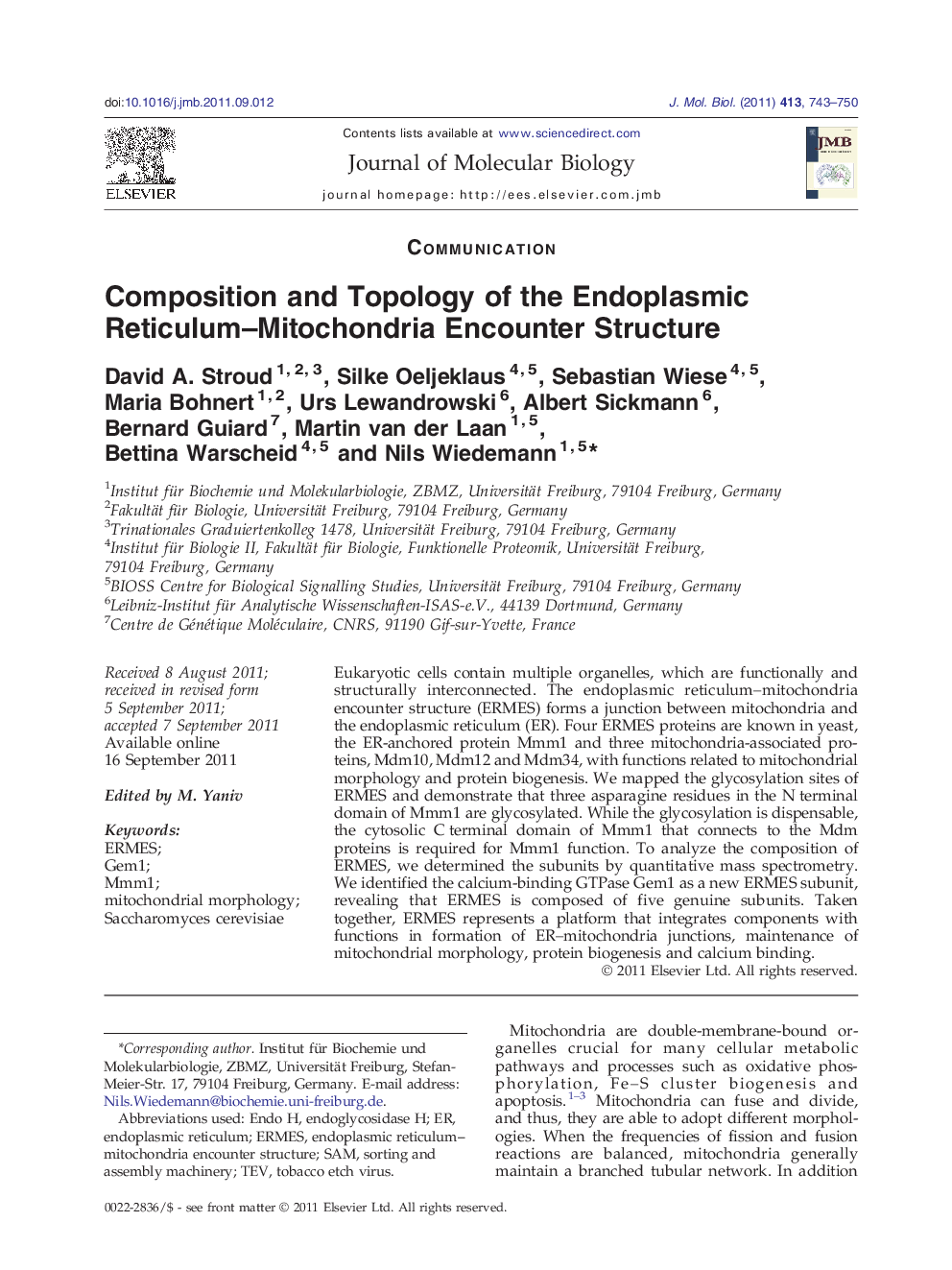| Article ID | Journal | Published Year | Pages | File Type |
|---|---|---|---|---|
| 2184950 | Journal of Molecular Biology | 2011 | 8 Pages |
Eukaryotic cells contain multiple organelles, which are functionally and structurally interconnected. The endoplasmic reticulum–mitochondria encounter structure (ERMES) forms a junction between mitochondria and the endoplasmic reticulum (ER). Four ERMES proteins are known in yeast, the ER-anchored protein Mmm1 and three mitochondria-associated proteins, Mdm10, Mdm12 and Mdm34, with functions related to mitochondrial morphology and protein biogenesis. We mapped the glycosylation sites of ERMES and demonstrate that three asparagine residues in the N‑terminal domain of Mmm1 are glycosylated. While the glycosylation is dispensable, the cytosolic C‑terminal domain of Mmm1 that connects to the Mdm proteins is required for Mmm1 function. To analyze the composition of ERMES, we determined the subunits by quantitative mass spectrometry. We identified the calcium-binding GTPase Gem1 as a new ERMES subunit, revealing that ERMES is composed of five genuine subunits. Taken together, ERMES represents a platform that integrates components with functions in formation of ER–mitochondria junctions, maintenance of mitochondrial morphology, protein biogenesis and calcium binding.
Graphical AbstractFigure optionsDownload full-size imageDownload high-quality image (31 K)Download as PowerPoint slideHighlights► Mdm34 and Gem1 are subunits of the ERMES. ► The major ERMES subunit Mmm1 is exclusively glycosylated on the N-terminus. ► The cytosolic C-terminal domain of Mmm1 is required for ERMES function.
